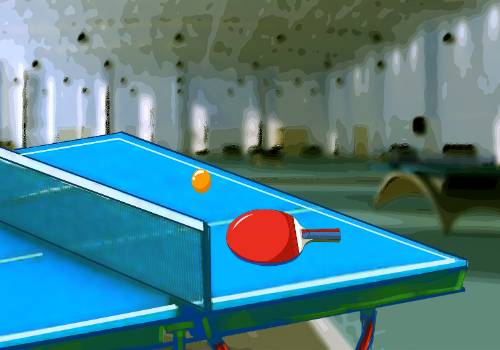滑动查看中文
In Chapter 4 of Purposeful Play, the Early Years team explored how to cultivate empathy in our young learners. They explored two different aspects of empathy which are understanding emotions and perspective taking.
 (资料图片仅供参考)
(资料图片仅供参考)
To help students understand emotions, it is important to provide opportunities for them to interact and bond with others to develop their emotional vocabulary so that they can then identify emotions in others.
Perspective taking develops when students engage socially and begin to understand the different perceptions and experiences of others.
Our teachers and TAs worked in their grade level teams along with our specialist teachers to reflect on how they are already helping students to develop these skills. It was wonderful to hear all the strategies and learning experiences they are intentionally planning to help students develop empathy. They then had the opportunity to identify and plan for an area of empathy that they can further help students develop in their class.
How is empathy developed in
our Early Years classrooms?
#
Empathy in K3
Students are challenged during lessons with different activities: group activities, individual projects and challenging lessons. This can bring a variety of emotions based on the outcome of their work. Students may show euphoria, boredom, frustration or sadness.
These activities challenge how students deal with all these emotions and how they support one another through them. During these lessons I encourage students to cheer each other on to conquer the challenges they face. They might hug or comfort a student facing disappointment. They are encouraged to use language of a supporting nature of students work and in their own by asking questions like "Do you like your work?" "As long as you like it then it is wonderful.”
Students turn the dial to show how Milo the Mouse feels when this happens.
Children love stories and they can relate to the characters. When we ask follow up questions, we give students opportunities to make connections with how they feel and how others might feel.
#
Empathy in K4
Emotion coaching: Before we talk about the problems, we show understanding about their feelings first. We want to listen, and we want to be heard too.
Capturing the moments that arise in daily life and bringing them into class discussion. Students will see the issue with fresh eyes and have a good chance to understand others and to be understood by others.
We learn the words: please, thank you. Are you ok? Even if we don"t have a lot of empathy at that moment, we can learn what, when, and how to show empathy.
The K4 team would like to create the colour zone. “I am in the red zone. I need to take some time", and give students space in a designated quiet place in the classroom. When our feeling zone moves to yellow or green, that is okay because our feelings are valid. We are learning what we can do and what we can"t do.
#
Empathy in K5
Students role play different scenarios to help them take the perspective of others. They practice using an “I message” to help with problem solving.
During our Wednesday collaboration time, we came up with a game that will help students better identify emotions in others. The game started with the teacher, and then the children, picking an object and describing what that object would say in a certain situation that was modeled.
For example: What would a chair say if a person sat down really hard on it? It would say, "ouch, you hurt me." We will later extend this activity to recognizing the emotions of people by using pictures and having the children connect the emotion that the objects felt to a picture of a person feeling the same way.
#
Creative Arts
Students are developing empathy as they deepen their understanding of emotions and use puppets to take on different perspectives.
#
Physical Education
Our PE classes can be very active and sometimes competitive. In PE we role play different scenarios that usually occur when playing a game or activity. We look at how our actions (sometimes accidents!) and behaviors can impact our classmates" emotions. We discuss and practice how we can show empathy (be caring) to those being impacted.
What do our teams want you to
know from this chapter?
K3
Team
Our job is not to shield children from emotions but to help them process them in healthy ways. Part of this work is helping children understand what their own emotions feel like, what they can do to manage their feelings, and how to use this knowledge to read faces and understand what others might be feeling. (Purposeful Play p. 55)As parents and educators, it"s tempting to protect children"s innocence. We want the best for them. We love hearing laughter and seeing smiles. We hate seeing them cry and get frustrated. We want to minimize how often [TT1]children face difficulties.
But working through challenges helps children grow. We can model appropriate ways to respond when we feel angry, upset, or sad. We can talk about how we feel and discuss what we can do about it. We can encourage our children to consider how others might feel and how they can respond.
In K3, we want students to manage their emotions and be aware of the emotions of others. We read books and talk about things that happen in the classroom. Doing this at home will continue to nurture empathy and encourage children to be caring people in the world.
K4
Team
How are you feeling today? We normally would say “I am good”. Can we always be good and happy? K4 talked a lot about feelings here at school. We had really great debates about why some feelings are bad and that all our feelings are ok to feel. We want you to ask about all these comments:
“Don’t cry. Here’s a candy”
"I"ll get you a balloon”
“Nothing to be scared about.”
“Big boys don’t cry”
“You can’t get mad for that”
“You are ok"
"You are not sad”
“You should be happy for that”
What are your thoughts about them? We hear or use these words a lot, but let’s think about it. Do we need to try to distract children from feeling sad? If I am sad, why do I need to be distracted by something to forget that? Can we control someone else’s feelings? We all have our own feelings. We want children to feel.
I can be angry or sad because I care so much about...
I can take my time to be sad. I won"t be sad forever.
I feel what I feel, and I know it. Let"s work as a team to enable children to be themselves and feel what they feel. We want them to know they have their own feelings. This will also help our children to know themselves, others and appreciate who they are.
K5
Team
It is good to model feelings and emotions at home so that children can learn how to express their emotions and identify emotions in others in order to become empathetic. It is okay to feel each emotion and talk about them and hear other"s perspectives to develop empathy. Don"t try to hinder or redirect your child to feel a different way. It is ok for children to feel sad, angry or upset. The idea is for children to learn how to work through their emotions.
An example would be talking through the emotion or telling the child that you can understand why they feel that way. Play also gives children exposure to their peers" feelings and emotions. It will help children face problems throughout life. Empathy needs to be developed at home and at school.
PE
PE can be fun, energetic, competitive and sometimes frustrating. Each student develops (especially at a young age) differently.
It is so important that students practice empathy through various methods like: role play, reading emotions on faces or body language, steps of recognizing and offering support/ understanding to those in need. It is easy to forget all of these things when engaged in a fun game, but the more we practice and reflect on our actions, the more natural empathy will come to our students.
Slide to English
在《目的性游戏》第四章中,幼儿教学团队探讨了如何培养幼儿学生的同理心。他们探索了同理心的两个不同方面,即理解情绪和换位思考。
帮助学生理解情绪,重要的是要为他们提供与他人互动和建立联系的机会,以发展他们的情绪词汇,以便他们能够识别他人的情绪。
当学生参与社交并开始理解他人的不同看法和经历时,就会发展换位思考能力。
我们的教师和助教在他们年级团队中与我们的专业教师一起工作,反思他们为了帮助学生发展这些技能所做的工作。我们很高兴听到他们计划帮助学生培养同理心的所有策略和学习经验。然后他们确定规划一个能进一步帮助学生在课堂上发展同理心的地方。
我们如何在幼儿园课堂
培养同理心?
#
K3
学生在课程中接受不同活动的挑战:小组活动、个人项目和具有挑战性的课程。这个过程会根据他们的挑战结果产生各种情绪:学生可能会表现出欣快、无聊、沮丧或悲伤。
这些活动挑战学生如何处理所有这些情绪以及他们如何通过这些情绪相互支持。在这些课程中,我鼓励学生们在克服面临的挑战时,互相为彼此鼓舞。他们可能会拥抱或安慰失望的学生。我们鼓励他们使用支持性的语言,像这样提问:“你喜欢你的作品吗?”“只要你喜欢,那就是美妙的。”
学生们转动表盘来显示当这发生时米老鼠的感受。
孩子们喜欢故事,他们能与人物产生共鸣。当我们提出后续问题时,我们让学生有机会将他们的感受和其他人的感受联系起来。
#
K4
情绪指导:在我们谈论问题之前,我们首先表现出对他们感受的理解。我们想倾听,我们也想被倾听。
捕捉日常生活中出现的瞬间并将它们带入课堂讨论。学生将以全新的眼光看待问题,并有很好的机会去理解他人和被他人理解。
我们学习词句:请,谢谢。你还好吗?即使我们在那一刻没有太多的同理心,我们也可以学习何时如何表现出怎样的同理心。
K4团队想要创建颜色区域来表达。我在红区。我需要静静”,并在教室指定的安静的地方给学生空间。当我们的感觉区变成黄色或绿色时,没有关系因为我们的感觉仍然是有效的。我们正在学习我们可以做什么以及我们做不到的。
#
K5
学生角色扮演不同的情景,帮助他们从他人的角度出发。他们练习使用“我信息”沟通法来帮助解决问题。
在我们的周三合作时间,我们创造了一个游戏,可以帮助学生更好地识别他人情绪。游戏从老师开始,然后是孩子们,他们选择一个对象并描述该对象在模拟的特定情况下会说什么。
例如:如果一个人真的用力坐在椅子上,椅子会说什么?它会说,“哎哟,你伤到我了。” 稍后我们会将此活动扩展到通过使用图片来识别人们的情绪,并让孩子们将物体感受到的情绪与具有相同感受的人的图片联系起来。
#
创意艺术
学生在加深对情绪的理解并使用木偶呈现不同的观点时,正在培养同理心。
#
体育
我们的体育课非常活跃,有时甚至竞争激烈。在体育课中,我们角色扮演通常在玩游戏或活动时发生的不同场景。我们看看我们的行为(有时是意外!)和行为如何影响同学的情绪。我们讨论并练习如何向受影响的人表示同情(关怀)。
我们的幼儿教学团队希望
您从本章中了解到什么?
K3
教学团队
我们的工作不是保护孩子不受情绪影响,而是帮助他们以健康的方式处理情绪。其中一部分是帮助孩子们了解他们自己的情绪是什么感觉,他们可以做什么来管理自己的情绪,以及如何使用这些知识来感知他人情绪并理解他人的感受。(目的性游戏第55页)
作为父母和教育者,我们通常禁不住保护孩子的天真;我们想要最好的给他们;我们喜欢听到笑声看到微笑;我们讨厌看到他们哭泣和沮丧;我们希望尽量减少儿童面临困难的频率。
但是克服挑战有助于孩子成长。当我们感到愤怒、沮丧或悲伤时,我们可以模拟适当的反应方式。我们可以谈谈我们的感受,并讨论我们可以做些什么。我们可以鼓励孩子考虑其他人的感受以及他们的反应。
在K3,我们希望学生能够管理自己的情绪并了解他人的情绪。我们读书,谈论课堂上发生的事情。在家里这样做将继续培养孩子同理心,并鼓励他们成为有爱心的人。
K4
教学团队
你今天感觉如何?我们通常会说“我很好”。我们会永远快乐吗?K4学生在学校学习谈论了很多感受。关于为什么有些感觉不好,我们进行了激烈辩论,所有感觉都是可以感知的。我们希望您能思考一下以下这些说法:
“别哭,给你一颗糖”
“给你一个气球”
“没什么好害怕的”
“大男孩不哭”
“你没必要感到生气”
“你很好”
“你不难过”
“你应该为此感到高兴”
您对此有什么看法?我们经常听到或使用这些话语,但是让我们想一想,我们真的需要设法分散孩子感到难受的注意力吗?如果我难过,为什么我需要分散注意力去忘记它?我们能控制别人的感受吗?我们都有自己的感受,我们希望孩子们也能感受到。
我可能会生气或难过,因为我非常关心……
我可以伤心一会,但我不会永远悲伤。
我感受到我的感受,并且我知道自己的感受。让我们一起合作,让孩子们做自己,感受他们的感受。我们希望他们知道他们有自己的感受。这也将帮助我们的孩子们了解自己和他人,并欣赏自我。
K5
教学团队
最好在家里模拟感受和情绪,这样孩子们就可以学习如何表达自己的情绪和识别他人的情绪,从而变得善解人意。感受每一种情绪并谈论它们,听取他人的观点以培养同理心是可以的。不要试图阻碍或引导您的孩子去感受不同的方式。孩子感到悲伤、愤怒或不安是正常的。这个想法是让孩子们学习如何处理他们的情绪。
一个方式是通过情绪说话或告诉孩子你可以理解他们为什么会有这种感觉。玩耍还可以让孩子接触到同龄人的感受和情绪。它将帮助孩子在成长过程中面对问题。我们需要在家里和学校培养同理心。
PE
体育课可以是有趣的、充满活力的、有竞争力的,但有时也会令人沮丧。每个学生的发展(尤其是在年幼时)都不同。
学生通过各种方法练习同理心非常重要,例如:角色扮演、阅读面部或肢体语言的情绪、识别并向有需要的人提供支持/理解的步骤。在玩有趣的游戏时很容易忘记所有这些事情,但我们练习和反思自己的行为越多,我们的学生就会越自然地产生同理心。
关键词: 深圳幼儿园



















 营业执照公示信息
营业执照公示信息